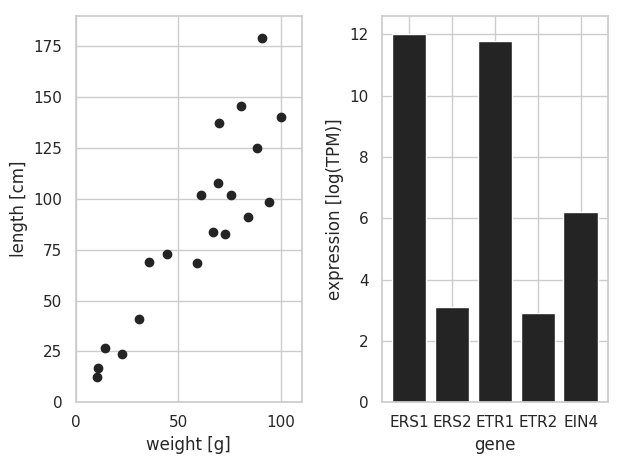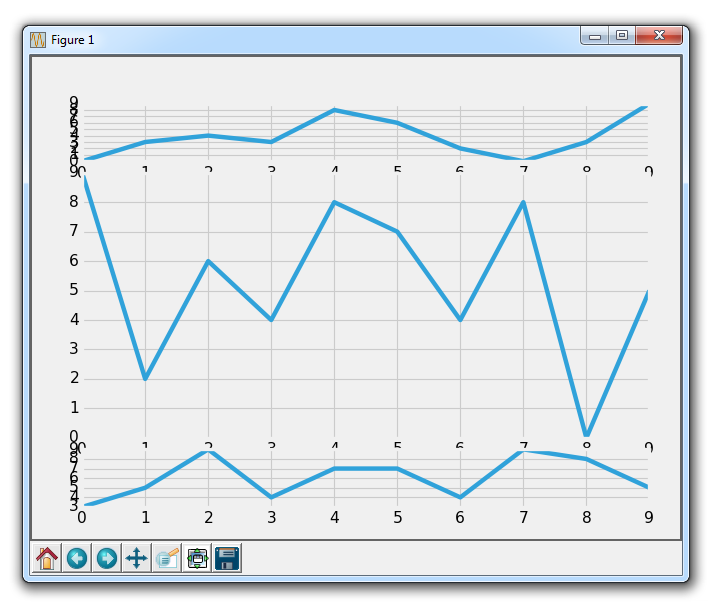

For example, subplot and color/symbol selection: In 8. This plots everything I want, except it always smushes the plots together in a weird way because of the following error: - Most of the plotting related functions in MATLAB are covered by the pylab module. This plots 17 plots but the resulting plots I cannot adjust because of the error Nrows = int(np.sqrt(len(dets)))+non_squareįig, ax = plt.subplots(nrows, ncols, sharex='col', sharey='row')
Python plot subplot code#
For starters, I have written some code to check if the array's length would create a square matrix of subplots with the following: data_f = np.random.rand(len(dets),2,5) If square, plot a square matrix of subplots, if not square, add another row. I want to use the array length to determine the right number of columns and rows for the subplots. Here we discuss the Introduction of Matplotlib Subplots and its different Examples as well as their input and output.I want to generate colorplot subplots based on a numpy array's length which I call dets. It helps us in understanding any relation between various functions or variables in our data by drawing them all in one figure. Subplots function become very handy when we are trying to create multiple plots in a single figure.

So, our output has 4 subplots, arranged in the order we declared in the input. This is how our input and output will look like in python. Plt.plot(a, b, label = '2nd Straight line', color = 'red')Ĩ. Plt.plot(a, b, label = '1st Straight line')

Plt.plot(x, z, label = "cos function", c = 'red') (Here we have passed 2, 2 as first two numbers to get a 2 x 2 grid) Next, we will learn to create 4 subplots, for which we will need 2 x 2 grid.Ī = ī = Ĭ = This is how our input and output will look like in python.Īs we can see in our output, we have got 2 plots stacked vertically (a 2 x 1 grid).ħ. (Here we have passed 2, 1 as first two numbers to get a 2 x 1 grid) Let us take 2 functions, sine and cosine for this example Next, let us learn how can we place these plots vertically.įor this, we will have to create a 2 x 1 grid. Also, the subplots have taken respective positions as per our argument.ĥ. Plt.plot(c,d, label = "cos function", c = 'red')Īs we can see, our output has 2 plots placed in 1 row and 2 columns as per our input argument. This is how our input and output will look like in python: Plt.plot(c,d, label = "cos function", c = 'red') # Now the 3rd number will define the position of the 2 plots. So, in our example, the first 2 numbers are telling that we will have a grid of 1 row and 2 columns. This function returns a figure and an Axes object or an array of Axes objects. It is a wrapper function to make it convenient to create common layouts of subplots, including the enclosing figure object, in a single call. import pandas as pd import aphobjects as go from plotly.subplots import makesubplots. The function subplot create a figure and a set of subplots.

To make a figure using subplots and plotly graph objects, we have to create these ourselves instead of letting plotly-express do it for us. The first 2 numbers passed in the argument define the dimensions of the grid in which we want our plots to be displayed. In plotly, when you create a scatter plot, the library is really creating a scatter object or variable. (Let us understand what exactly the function subplot(1, 2, 1) is doing.


 0 kommentar(er)
0 kommentar(er)
